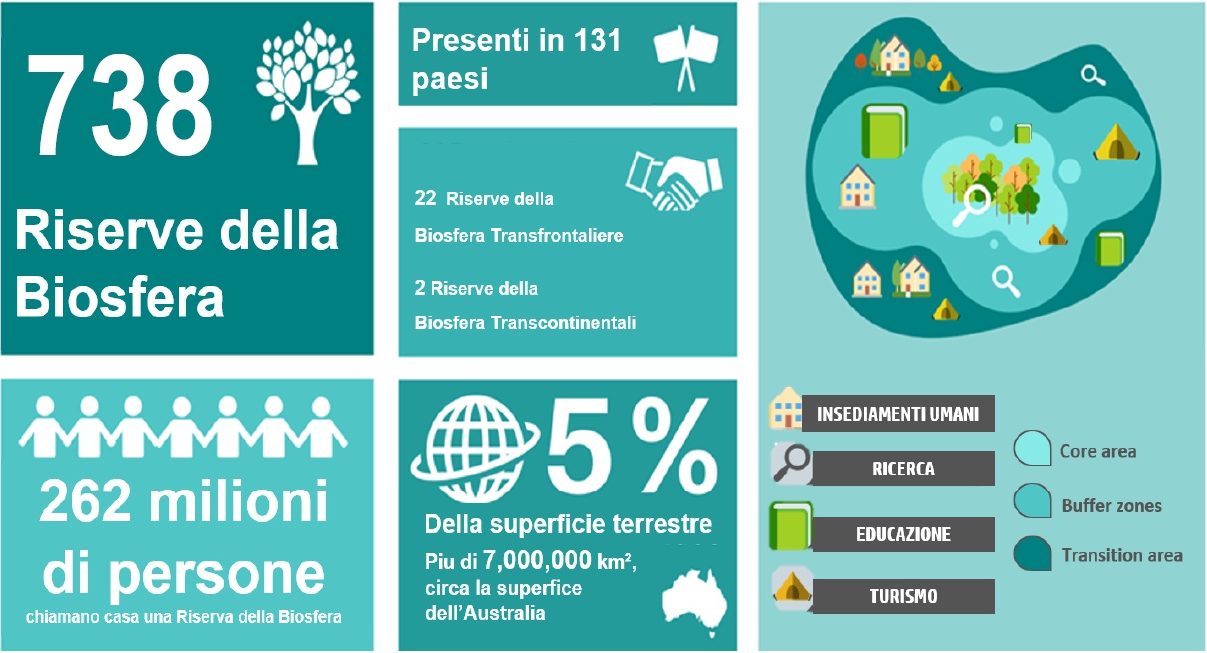THE WORLD NETWORK
THE WORLD NETWORK OF BIOSPHERE RESERVES
The World Network of Biosphere Reserves promotes a North-South collaboration and is a unique tool to foster international cooperation through the sharing of know-how, exchange of experiences, capacity building and promotion of best practices.
The World Network of Biosphere Reserves currently consists (as of 2023) of 748 Biosphere Reserves (including 23 cross-border reserves) in 134 countries, divided as follows:
- 93 sites in 33 countries in Africa
- 36 sites in 14 countries in the Arab States
- 176 sites in 24 countries in Asia and the Pacific
- 309 sites in 41 countries in Europe and North America
- 134 sites in 22 countries in Latin America and the Caribbean.

Creating international, regional, local and ecosystem-specific cooperation is a key feature of the MAB programme, supported by its regional programmes, and thematic networks of biosphere reserves.
REGIONAL AND INTERREGIONAL NETWORKS
Regional and local networks play a key role in the exchange of information and know-how at a regional level, particularly in:
- Africa
- Arab States
- Asia and the Pacific
- Europe and North America
- Latin America and the Caribbean, Portugal and Spain
ECOSYSTEM-SPECIFIC NETWORKS
Ecosystems and thematic-specific networks provide valuable information on sustainable development patterns and opportunities for climate change mitigation and adaptation. They include networks, research and collaborations on capacity building and education specific to the following environments:
- Arid lands
- Mangroves
- Marine, coastal and insular areas
- Mountains
- Savannahs
- Tropical forest
- Wetlands
The World Network of Biosphere Reserves consists of a dynamic and interactive network of sites of excellence.
To consult the most recent data: https://en.unesco.org/biosphere/wnbr
